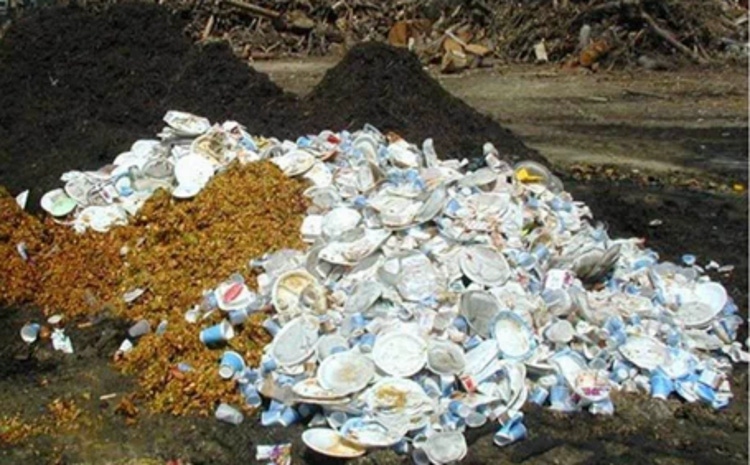
Across the U.S., we continue to see a growth in the availability of composting infrastructure, as well as a growing interest in compostable products and packaging. A July 2014 Biocycle article highlights this trend, and makes a clear connection to the larger benefits: “The beauty of composting is that it can be small-scale, large-scale and everything in between,” says Brenda Platt. “Why send resources out of the community when our neighborhoods need food and our soils are starved for organic matter?”
Packaging has a prominent yet precarious place in the world of composting. On one hand, it makes sense to send food-soiled material to the composter along with the desired food nutrients. And in self-contained locations such as cafeterias and events, an “all-or-nothing” approach to procuring packaging for the venue minimizes confusion and sends the signal that diversion isn’t complicated.
On the other hand, both the public as well as composters often have difficulty discerning just exactly which packages are certified compostable, and the variations in types of processing creates a challenge for designers and planners. If it doesn’t bring food scraps with it or otherwise causes problems, the value of processing packaging material is quite limited. For example, Portland’s recent changes mean that businesses can no longer compost most packaging (with the exception of BPI-certified bags, coffee filters and tea bags), but residential composting remains the same, accepting all types of certified packaging.
GreenBlue’s Sustainable Packaging Coalition is currently working with a number of stakeholders on initiatives designed to help alleviate some of this confusion that results in contamination, as well as expand the awareness and availability of composting as a viable waste solution.
In collaboration with interested SPC members and the BPI, the entity that certifies packaging as compostable, the SPC is currently consumer-testing a new version of the How2Recycle Label that incorporates the BPI logo and qualifying language. This expanded application of How2Recycle is designed to elevate awareness of packaging that has multiple end-of-use components and/or options, as well as assist the composting community by reducing the confusion regarding what is compostable.
A label can’t solve all of the communication and contamination issues; overall package markings and identification remain an issue as well. The U.S. Composting Council, one of GreenBlue’s strategic allies, has important labeling guidelines that municipalities are beginning to implement. For example, a plastic bag should not be tinted green unless it is compostable. In addition, designers should avoid “copy-cat” packaging that looks like a compostable counterpart, as we’ve seen first-hand evidence of the confusion and contamination this creates.
For example, I’ve seen compost collection bins contaminated with an off-white plastic clamshell that looks like fiber-based bagasse; a poly-lined fiber cup that has a green stripe; and a brown take-out box labeled with loads of eco-friendly sounding language, including the discouraged term “green,” none of which are actually compostable.
Foodservice packaging is a great place to work on strengthening connections between the packaging industry and the composting community. The SPC is taking its packaging design expertise to the foodservice package level by creating a guide specifically related to this type of packaging. With input from the SPC members in the Foodservice Packaging Industry Leadership Committee, this Guide will include all aspects of the recovery supply chain, including composting. It will also include “state of the industry” information on current initiatives underway, such as work of the Foodservice Packaging Institute.
Ultimately, composting is a “place-based” solution that requires regional focus and cooperation. The SPC’s action-based composting project in the Charlotte, NC, area—made possible by a U.S. EPA Region IV grant and the support of Mecklenburg County and other partners—aims to demonstrate the functional feasibility and community benefits of composting food and packaging waste, benchmark typical waste feedstock characteristics, collect economic and environmental data about food and packaging waste composting, and disseminate findings to stimulate new programs nationwide.
As with all recovery options, a diverse array of solutions with a collaborative approach—from the packaging design phase to the “on-the-ground” level—are needed for packaging to fully realize its potential in the world of composting.
Anne Bedarf is a senior manager with GreenBlue’s Sustainable Packaging Coalition. For additional information about the Coalition and the How2Recycle Label, please visit www.sustainablepackaging.org and www.how2recycle.info.
About the Author(s)
You May Also Like


